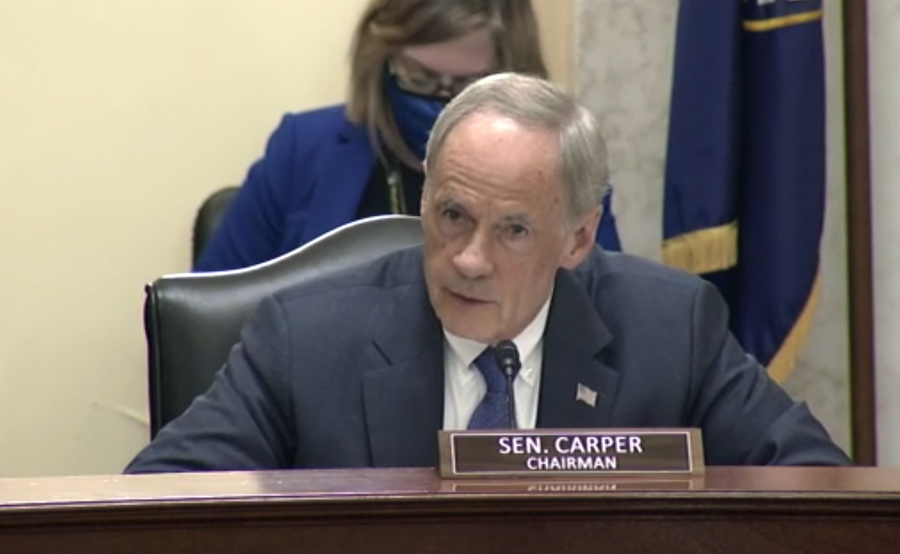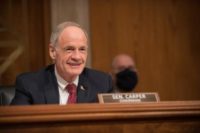The US Senate Environment and Public Works Committee (EPW) is beginning preliminary work on a new Water Resources Development Act, or WRDA to authorize funds for US Army Corps of Engineers river locks and dams, flood protection, environmental restoration and other projects.
Work is in its early days but a July 28 hearing showed wide interest in one issue that seems almost certain to be addressed in the new WRDA envisioned for 2022—changing how the Corps calculates potential projects’ benefit-cost ratio. Witnesses at the hearing said the current metric need an overhaul.
That calculation is critical, because the US Office of Management and Budget generally wants to see a cost-benefit ratio of 2.5 to 1 in order to include a project in a presidential budget request.
Climate Issues
Dealing with climate change, includiing provisions for project resilience, also are likely priorities for the next bill, given the many years the Corps has been on the front lines of fighting floods and other natural disasters.
Committee Chairman Tom Carper (D-Del.) observed that states are being “increasingly hammered” by stronger storms, floods, rising sea levels and droughts, “and the Corps has been thrust into the position of prime defender against these all-too-frequent and increasingly costly disasters.”
He noted that from 1990 through 2019, the Corps got $53.9 billion in supplemental appropriations, most of which was for projects that responded to floods and major storms.
Carper said, “We shouldn’t be waiting for the storms to address these projects, we should be addressing these initiatives before the storms ever arrive.”
Big project backlog
Funding is a central element of WRDA. Opening the hearing, Carper noted that the Corps has been beset with “rampant underfunding,” leading to a backlog of authorized but not completed projects that has grown to $109 billion.
‘That’s more than 15 times the agency’s annual operating budget,” he said, “which should be a concern to all of us.”
Carper did npt say how much funding the 2022 WRDA should have.
The panel’s top Republican, Sen. Shelley Moore Capito (W.Va.), says changing the benefit-cost ratio is “something that we hear from everybody—from both sides …. so I think that that’s something that we ought to prioritize."
Benefit-cost ratio 'fundamentally broken'
Collin O’Mara, National Wildlife Federation president and CEO, is among those seeking to rework the present ratio. “It’s a process that’s fundamentally broken,” he said, adding that project benefits should include their positive impacts in such areas as water quality, soil stabilization, recreation and wildlife habitats.
Mario Cordero, executive director of the Port of Long Beach in California said the present analysis is "too rigid."
Testifying on behalf of the American Association of Port Authorities, he added that what's needed is factoring in the benefits of "natural infrastructure."
Amy Larson, a consultant and former president of the National Waterways Conference, also advocated changes in what benefits the Corps looks at in its project evaluations. Noting that the current calculation uses real estate values in the project area, she said “What that means is, it’s a clear detriment to areas with lower property values.”
Larson added that "we know that we need a more focused response to address flood risk sin thse hese disadvantaged communities.”
She suggested looking at the number of lives at risk from a flood, as well as the number of homes and other structures to be protected. "Consideration of life-safety should b paramount,” :Larson said.




Post a comment to this article
Report Abusive Comment